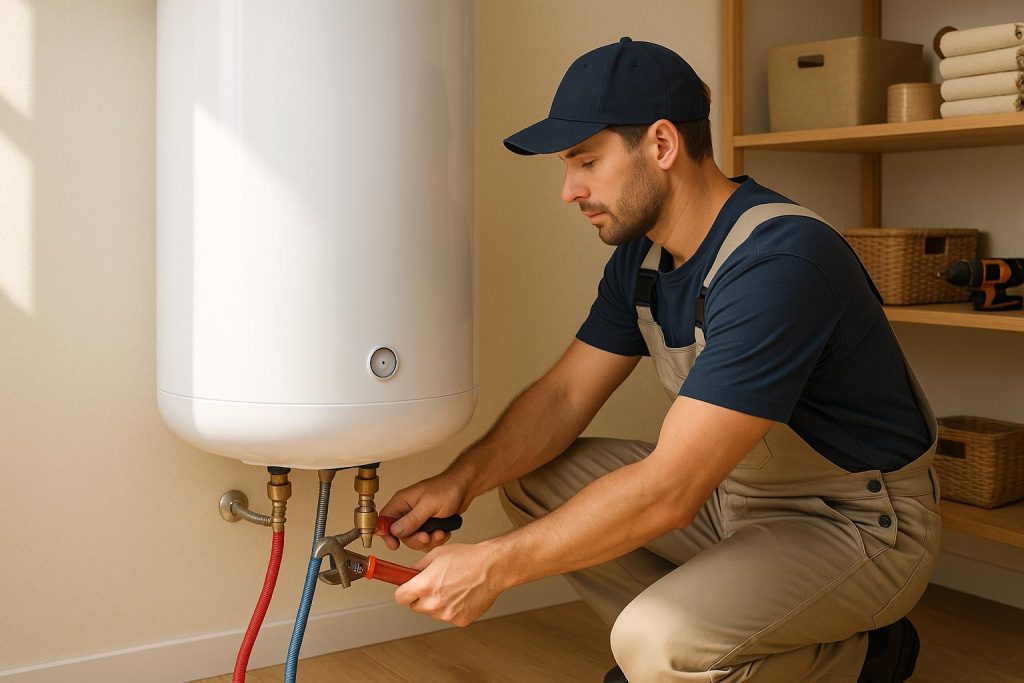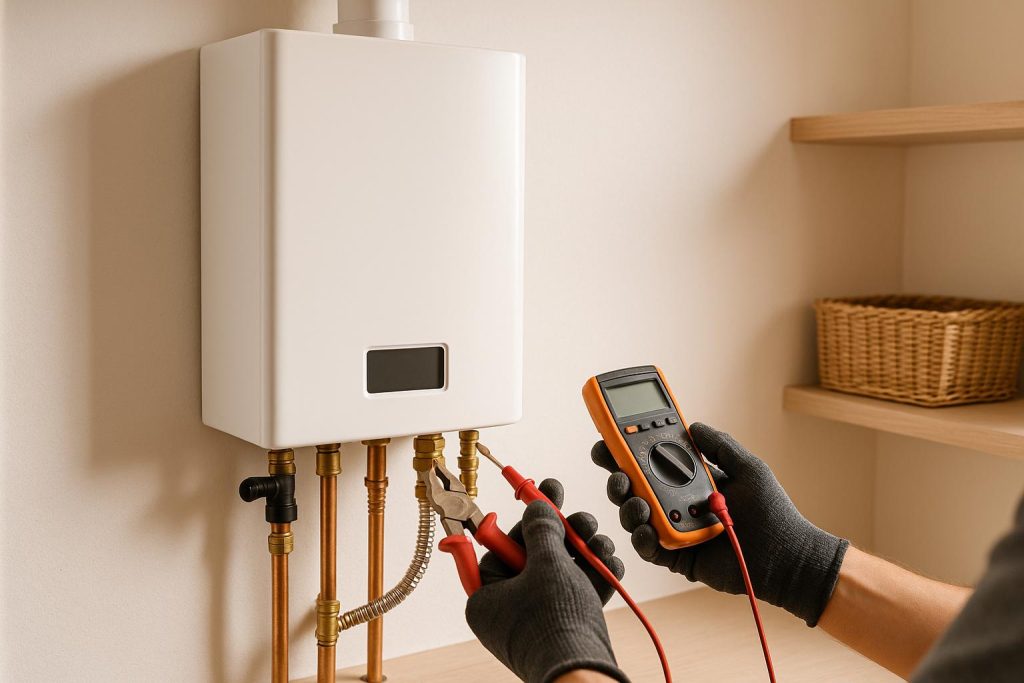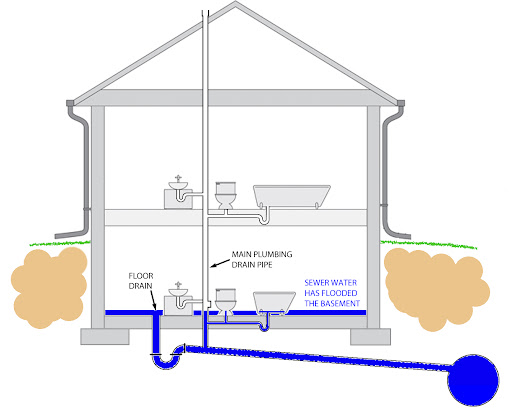
A main line simply refers to a sewer line, which carries waste from your house to the city’s sewer lines or septic tank. Drains lines on the other hand are connected to a specific fixture (like a toilet, tub, shower or sink) and carry waste from the fixture to the main line.
Here’s a table comparing the main line and drain line:
| Aspect | Main Line | Drain Line |
|---|---|---|
| Definition | The main line refers to the primary sewer line that collects all the wastewater and sewage from a property and transports it to the municipal sewer system or a septic tank. | Drain lines, also known as branch lines or lateral lines, are smaller pipes that connect individual plumbing fixtures (e.g., sinks, toilets, showers) to the main sewer line or septic tank. |
| Location | Typically buried deep underground and runs horizontally beneath the property, connecting to the municipal sewer system or septic tank. | Located within the walls and under the floors of a building, drain lines branch out from plumbing fixtures and connect to the main sewer line or septic tank. |
| Size | Larger in diameter to accommodate the flow of all wastewater and sewage from the property. Typically ranges from 3 to 6 inches in diameter or more. | Smaller in diameter compared to the main line. Sizes vary depending on the fixture being connected, with typical diameters ranging from 1.25 to 4 inches. |
| Function | Collects all wastewater and sewage from various fixtures and appliances within a property and transports it to the central sewer system or septic tank for treatment or disposal. | Individual drain lines collect and carry wastewater and sewage from specific fixtures (e.g., kitchen sink, bathtub, toilet) to the main sewer line or septic tank. |
| Material | Commonly made of more durable materials like PVC (polyvinyl chloride), cast iron, or clay to withstand the higher volume and pressure of sewage flow. | Often made of PVC or ABS (acrylonitrile butadiene styrene) plastic due to its corrosion resistance and ease of installation. Older homes may have drain lines made of cast iron or clay. |
| Maintenance | Main lines require regular inspection and maintenance to prevent blockages, leaks, or damage. Problems in the main line can affect the entire property. | Drain lines also need regular maintenance to prevent clogs and backups, but issues typically only impact specific fixtures or areas of the property. |
| Repair and Replacement | Repairing or replacing the main line is a more extensive and costly process, often requiring excavation and potential disruption to the property. | Repairing or replacing drain lines is usually less complex and disruptive, as it involves addressing issues within specific sections of the plumbing system. |
| Responsibility | The responsibility for the main line typically lies with the property owner until it connects to the municipal sewer system or septic tank, where responsibility may shift. | Property owners are responsible for maintaining and repairing drain lines within their homes or properties. |
| Common Issues | Main line issues often include clogs, blockages, tree root intrusion, and sewer line breaks. | Drain line problems commonly involve clogs from debris, grease, or foreign objects, as well as pipe corrosion and leaks. |
Your main line will be buried in your yard on the side facing the street if you are connected to the city’s sewer lines. If you are on a septic system, the main line will be found on the side of your property where the septic tank located.
The average cost of unclogging a sewer line is $450 with most people paying between $300 and $600. You can however pay a slow as $100 for minor clogs or as high as $3000 if the sewer line needs to be replaced.
The average cost of unclogging a drain line (toilet, sink, tub or shower) is between $100 and $300 depending on the severity of the clog. You pay more if the job involves pulling out the fixture.
Let us now look at main line and drain line independently in more details.
What is a Drain Line?
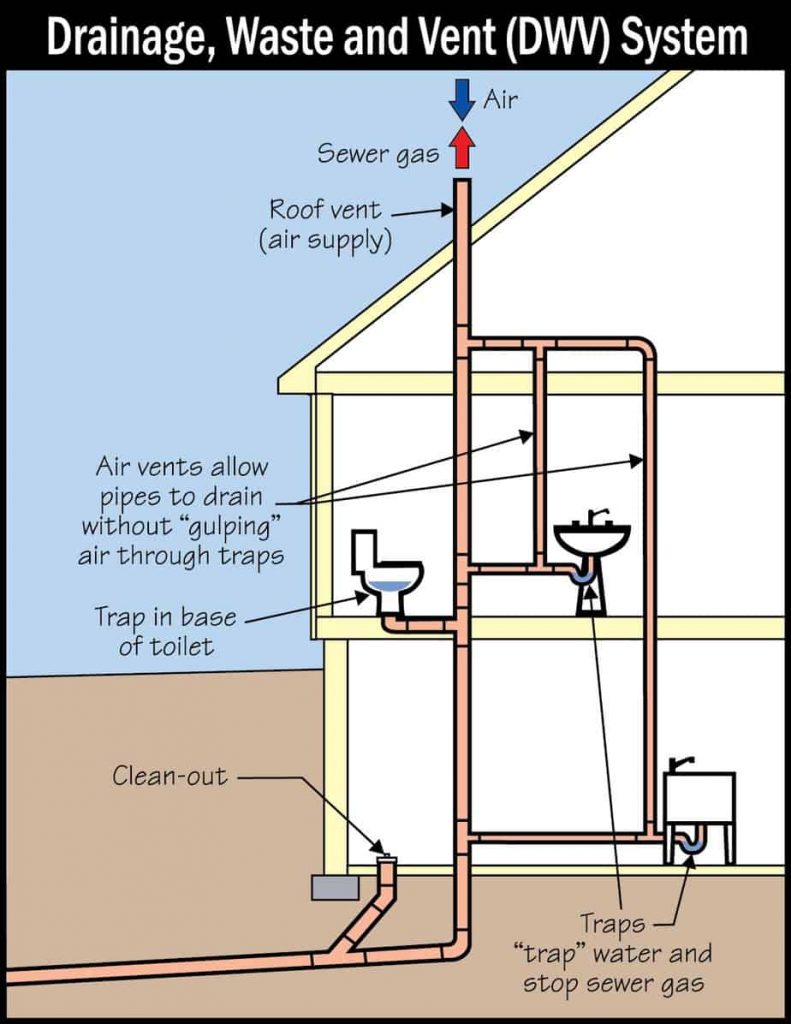
Have you ever experienced a clogged toilet, slow draining kitchen sink, or a bathtub with standing water? We all have.
In all of those instances, the problem is usually a clogged drain line especially when the above problems happen independently. Most people confuse between the main line and drain line but there is a third line. The main drain line also known as a drain stack.
To better help you better understand how your plumbing looks like, think of it like a river. Upstream, the river has many small rivers draining into it and then the river drains into the sea.
In this example, the small rivers upstream represents the different fixtures’ drain lines, the river represents the drain stack while the sea represents the main/sewer line.
Since you have different fixtures in your house, you have as much drain lines. These drain lines are of different sizes with the toilet drain being the largest.
Each of these drain lines are then connected to the main drain line or drain stack. The drain stack is a vertical pipe of about 4 inches in diameter.
It is important to understand that the drain stack is a vertical pipe while the drain lines are connected to it horizontally although they are slightly sloping so that the waste can drain out via gravity.
At the top, the drain stack is connected to the plumbing vent. This is the vertical pipe which runs through the roof of the house.
A plumbing vent is responsible for removing sewer gases from the drainage system, and also introduces air into the system which helps fixtures drain fast. When the vent is clogged, fixtures will drain slowly, gurgle and the toilet will have a weak flush.
Where it terminates, the drain stack is connected to main line or sewer line.
When the main drain stack is clogged, you will have sewage backing up from the fixtures above the position of the clog. On the other hand, the basement floor drain will be draining normally since it will be below the position of the clog, unless the clog is at the junction where the main drain line connects to the sewer line.
What is a Main Line?
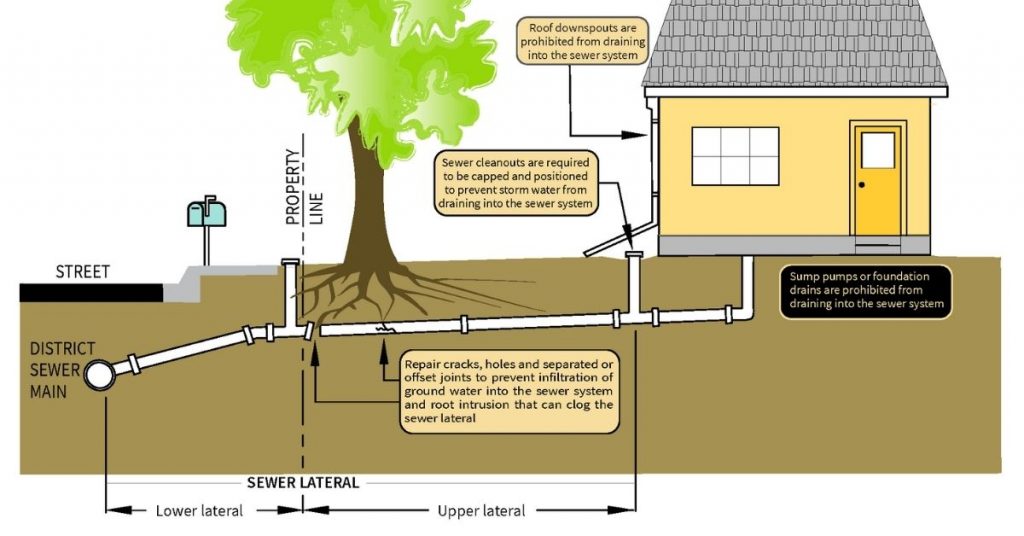
As we have already established, a main line simply refers to a sewer line. This pipe is connected from your house’s drain stack to the city’s sewer lines or septic tank.
It is installed underground in your yard sloping down towards the street or septic tank so that the waste drains out via gravity. Old sewer lines were made of clay and cast iron but most modern sewer lines are made of plastic.
Main/sewer lines have a diameter of between 4 and 6 inches and with a slope of 2 percent (2 feet drop for every 100 feet of pipe). If the diameter or slope is less than that, you will experience slow drains and frequent clogs.
One of the most important parts of a main line is the sewer cleanout. A sewer cleanout is a small section of pipe that allows you to access the entire sewer line and troubleshoot it or just clean/inspect it.
In some houses, sewer cleanouts are located in the lowest level of the house (usually the basement) where it forms a ‘Y’ or ‘T’ with the drain stack but some are on the floor. Since most people don’t like how it looks, it could be hidden inside a closet or something else so you need to carefully look for it.
If your sewer cleanout is located outside the house, it will be sticking a few inches from the ground but it is usually very close to the house. Look for yours outside the bathroom wall but also be careful since it could be hidden under flower bushes to conceal it.
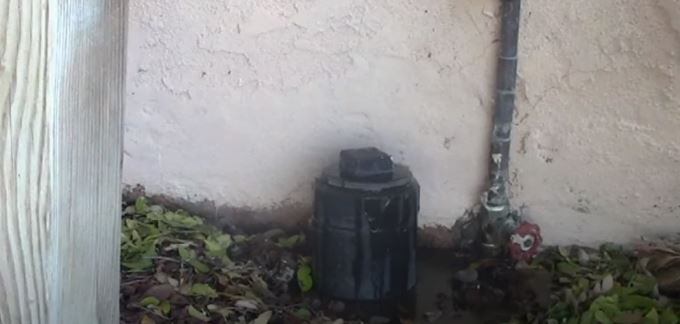
If your house does not have a sewer cleanout, a plumber (or yourself) will need to remove the toilet to access the sewer line. A toilet is preferred over other fixtures since it has a larger drain line.
Since this involves extra work, you will have to pay more if you call in a plumber to fix your sewer line. Alternatively, the sewer line can be accessed from the plumbing vent at the top of the house.
Both of the above methods have lower success rates than an actual sewer cleanout and most plumbers will not warranty their work if they have to work from the toilet drain line or vent stack.
The sewer line between the house and the street is strictly the responsibility of the homeowner. The city is usually responsible for the sewer lines running along the street.
You will therefore pay for sewer line repairs and maintenance from your pocket. Home insurance usually does not cover sewer lines unless you have paid extra for the same.
Troubleshooting Main Lines
One of the main symptoms of a clogged sewer line is when you have sewage backing up from your basement or lowest level of the house. When that happens contact a professional drain expert immediately.
Main lines are a little harder to unclog compared to drain lines. Whenever you have a clogged drain line, you can simply plunge or snake the respective drain which has a very high success rate.
I would recommend bringing on a professional plumber when you have a clogged sewer lines. The plumber will first run a sewer camera through the sewer line which will indicate the general health of the line.
It will also tell the type of clog you have and the plumber will therefore know which type of blade to use on the drain snake when unclogging it.
Sewer line clogs and sewage back ups are not pleasant. That is why I recommend having the sewer line inspected and cleaned at least once a year.
Apart from that, it helps to know why main lines clog and what you can do to prevent the same from happening.
One of the main causes of clogged sewer lines is flushing or dumping things which you shouldn’t flush/dump in drains. Wet wipes, baby diapers, feminine sanitary products, contraceptives, dental floss and other waste will without a doubt clog your sewer line.
Pouring of grease down the kitchen drain after cooking is also another cause. Although some people believe that running hot water afterwards will prevent clogs, the oil will eventually cool and solidify inside the sewer line and end up clogging it.
Tree roots will also clog your sewer lines especially if you have old clay or cast iron sewer pipes. Cleaning the sewer line annually, cutting tree roots or simply switching to plastic pipes will prevent this problem.
If you pipes are poorly installed (no slope or even sagging), the only solution will be to dig them out and have them installed properly.
When unclogging a sewer line, there are 2 options to choose from; Snaking and hydro jetting. The plumber will recommend the best solution after first running the sewer camera.
In cases where the sewer line is old and leaky, the plumber will recommend a replacement. Again, when working with sewer lines you are better off involving a professional than DIYing it.



